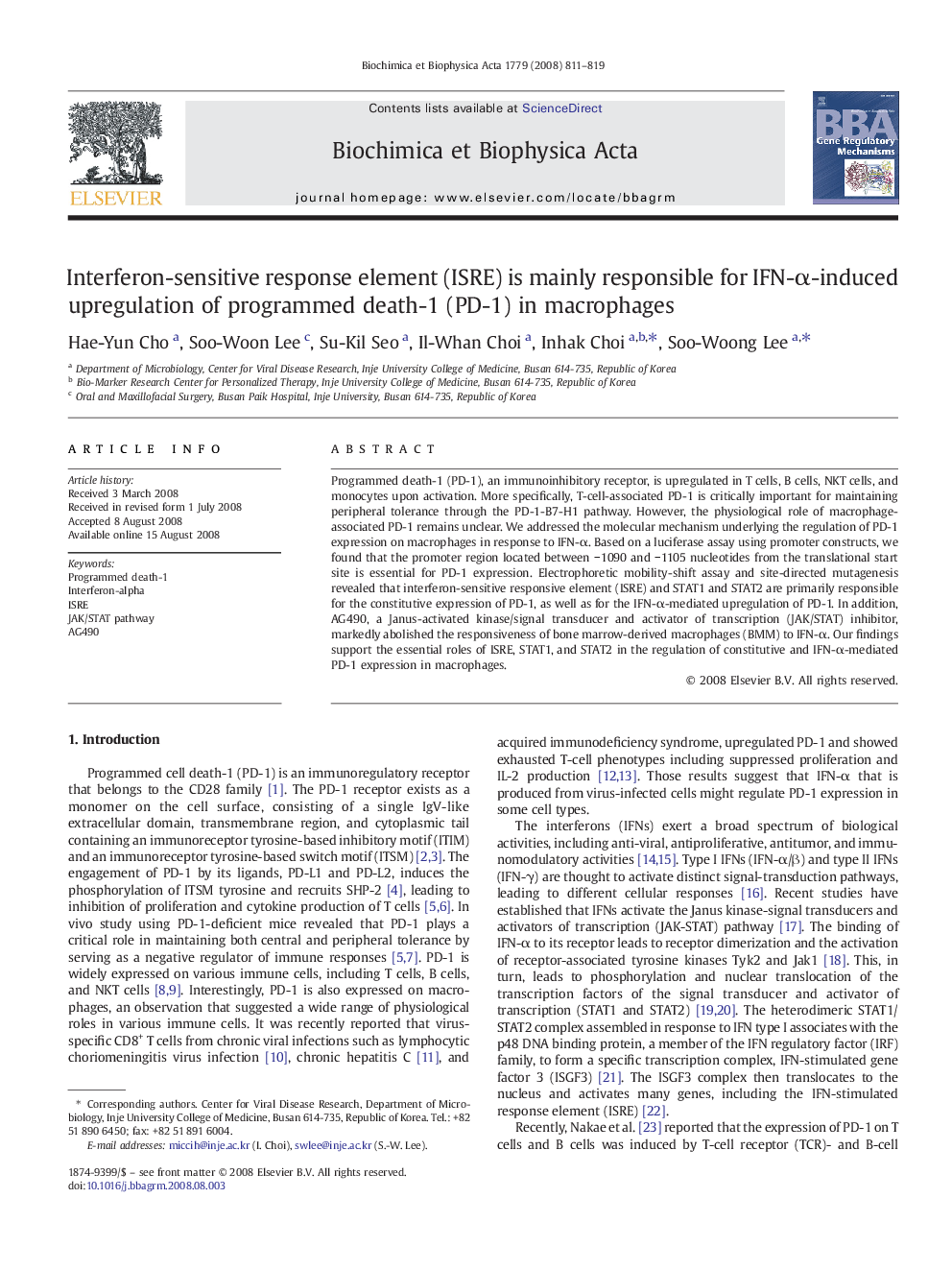| Article ID | Journal | Published Year | Pages | File Type |
|---|---|---|---|---|
| 1946960 | Biochimica et Biophysica Acta (BBA) - Gene Regulatory Mechanisms | 2008 | 9 Pages |
Programmed death-1 (PD-1), an immunoinhibitory receptor, is upregulated in T cells, B cells, NKT cells, and monocytes upon activation. More specifically, T-cell-associated PD-1 is critically important for maintaining peripheral tolerance through the PD-1-B7-H1 pathway. However, the physiological role of macrophage-associated PD-1 remains unclear. We addressed the molecular mechanism underlying the regulation of PD-1 expression on macrophages in response to IFN-α. Based on a luciferase assay using promoter constructs, we found that the promoter region located between − 1090 and − 1105 nucleotides from the translational start site is essential for PD-1 expression. Electrophoretic mobility-shift assay and site-directed mutagenesis revealed that interferon-sensitive responsive element (ISRE) and STAT1 and STAT2 are primarily responsible for the constitutive expression of PD-1, as well as for the IFN-α-mediated upregulation of PD-1. In addition, AG490, a Janus-activated kinase/signal transducer and activator of transcription (JAK/STAT) inhibitor, markedly abolished the responsiveness of bone marrow-derived macrophages (BMM) to IFN-α. Our findings support the essential roles of ISRE, STAT1, and STAT2 in the regulation of constitutive and IFN-α-mediated PD-1 expression in macrophages.
